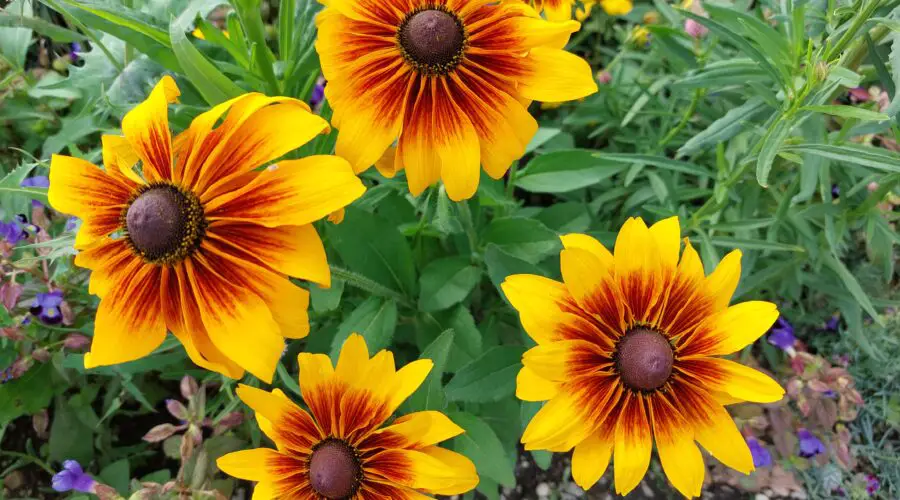Top 5 Easy-to-Grow Perennials for Beginner Gardeners
It can be overwhelming when you venture into gardening—trying to identify plants, understanding terms like annuals and perennials, and learning how to keep your plants alive. To help make it a little easier, let’s talk perennials and five of the easiest to grow that make stunning additions to your garden.
What are Perennial Plants?
Perennial plants live for more than two seasons, often many, after planting. When temperatures drop in the fall or the first frost hits, they store resources like carbohydrates in their roots and go dormant for the winter. Most of the time, the top of the plant dies back to the ground.
Come spring, when temperatures start to warm up, the plant comes out of dormant and regrows from its root system.
Why Should You Plant Perennials?
Perennials are popular garden and landscape plants because, after the initial investment, you enjoy them year after year and don’t have to purchase new plants every spring. Some people think they are considerably lower maintenance than annuals, but that depends upon the specific plant and how much care it needs.
They are also popular because you can find perennial plants in various colors, sizes, shapes, and textures. It offers limitless options for beautiful, unique gardening beds.
The Easiest Perennials for a Beginner Gardener
With thousands of perennial plants, it’s easy to get overwhelmed when picking a few options for your yard. Especially if you’re a beginning gardener and just learning different plants and how to care for them.
The following five plants are beautiful and considered low-maintenance, making them great plants for starting a garden.
Black-Eyed Susans (Rudbeckia spp.)
USDA Zones: 3 to 10
Sun Requirement: Full sun
Mature Height: 2′ to 3’ (60 to 90 cm)
Mature Width: 1′ to 2’ (30 to 60 cm)
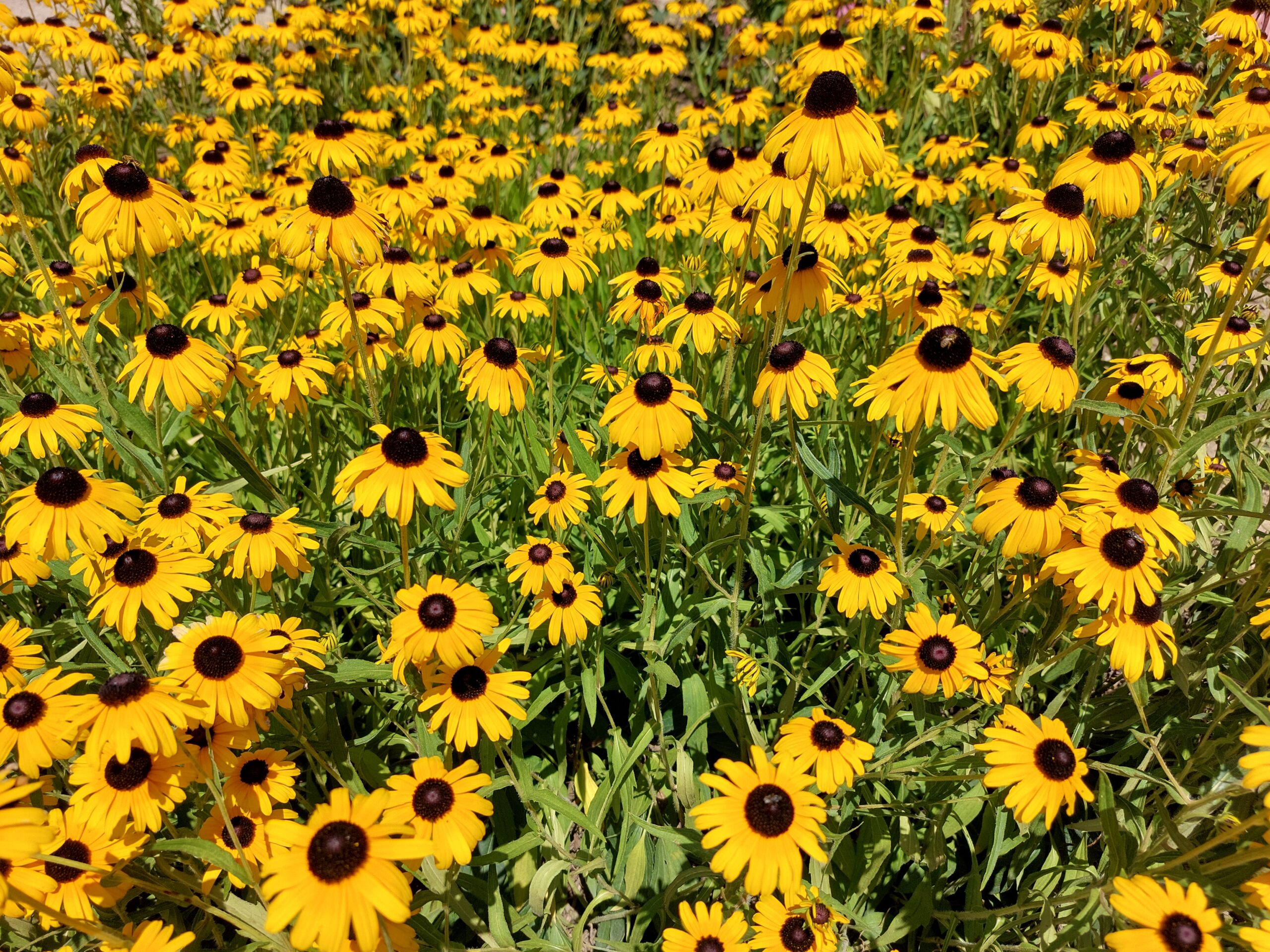
Black-eyed Susans are incredibly popular flowering perennials, and both gardeners and non-gardeners easily recognize them. They are known for their daisy-like appearance, with bright yellow to orange oblong petals arranged around deep, richly-colored center discs.
These sunflower family members are known for growing in rocky, infertile soils where many other plants won’t survive. This is why you often see them blanketing open fields and roadside ditches, adding bright pops of color to the landscape. Black-eyed Susans are also heat and drought-tolerant.
Sunlight Requirements
Black-eyed Susans adore the sunlight and will take as much light as possible. Pick a spot in your garden or flowerbed where they get at least six to eight hours of sun throughout the day. Since they are heat tolerant, they often thrive in spots that are too harsh for other perennial plants.
Watering Frequency
When you plant new seedlings, it’s important to water plants often until they establish a decent root system. Once they become established, they only need watering when the top couple of inches of soil dries out. Their drought tolerance makes them good plants for arid climates or soils that don’t hold onto moisture for long.
Fertilizing
Since Black-eyed Susans are tolerant of such poor soils, it’s not surprising they will survive without fertilizer during the growing season. If you want, apply a dose of slow-release all-purpose fertilizer when plants start growing in the spring. This single application will be enough to last all summer.
Tips for Growing Black-Eyed Susans
- Grow plants in containers or raised beds to keep them from taking over your entire garden.
- Divide clumps every couple of years, so they don’t become overcrowded.
- Remove flowers when they fade to encourage more blooms.
- In the fall, cut stems back to 4” (10 cm) high. Plants will regrow in the spring.
Peonies (Paeonia spp.)
USDA Zones: 3 to 8
Sun Requirement: Full sun
Mature Height: 3’ (90 cm)
Mature Width: 3’ (90 cm)
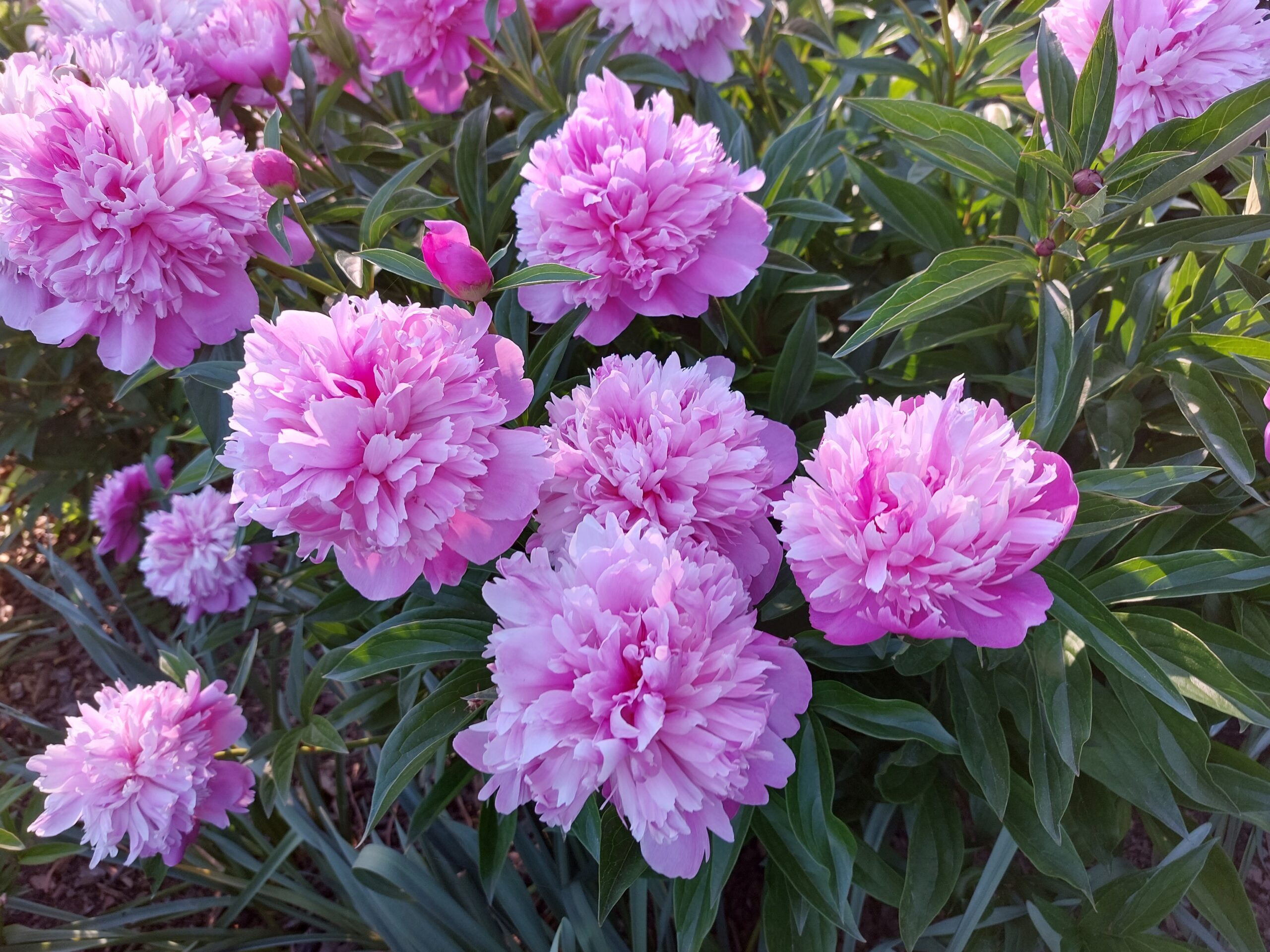
Peonies are another well-known and loved flowering perennial. There are six different flower types—anemone, bomb, Japenese, single, double, and semi-double—all with unique shapes and characteristics. Peony plants come in about three dozen varieties, and blush, pink, and white are gardeners’ most popular color choices.
Be careful when selecting a plant for your garden. A variety well-suited for your climate and specific soil type can bloom for over 100 years if you care for it correctly!
Sunlight Requirements
Peonies are another lover of the sun and prefer a spot in your yard that gets at least six hours of bright, direct sunshine every day. The more sun, the better! When plants don’t have enough sunlight, they produce fewer blooms and smaller flower heads. They’ll also be at an increased risk for fungal diseases.
Watering Frequency
Peonies are non-drought-resistant and prefer to grow in moist, well-drained soils. Give them one or two inches of water each week, but don’t let them sit in soggy soil. Giving them more water once or twice a week is better than a bit of water daily.
Fertilizing
Feed your Peony plants lightly. Mix a small amount of slow-release fertilizer and compost into the soil around the base of the plant just after it finishes blooming for the summer.
Tips for Growing Peonies
- Flowers can get heavy and cause stems to fall over from the weight. Consider using metal peony rings or wire cages when plants are small, so they’ll grow up through the support center.
- Deadhead blossoms as soon as they start to fade, cutting all the way back to a strong leaf.
- Cut stems back to the ground in the fall to minimize overwintering diseases.
Daylilies (Hemerocallis spp.)
USDA Zones: 3 to 9
Sun Requirement: Full sun
Mature Height: 3′ to 4’ (90 to 120 cm)
Mature Width: 1′ to 3’ (30 to 90 cm)
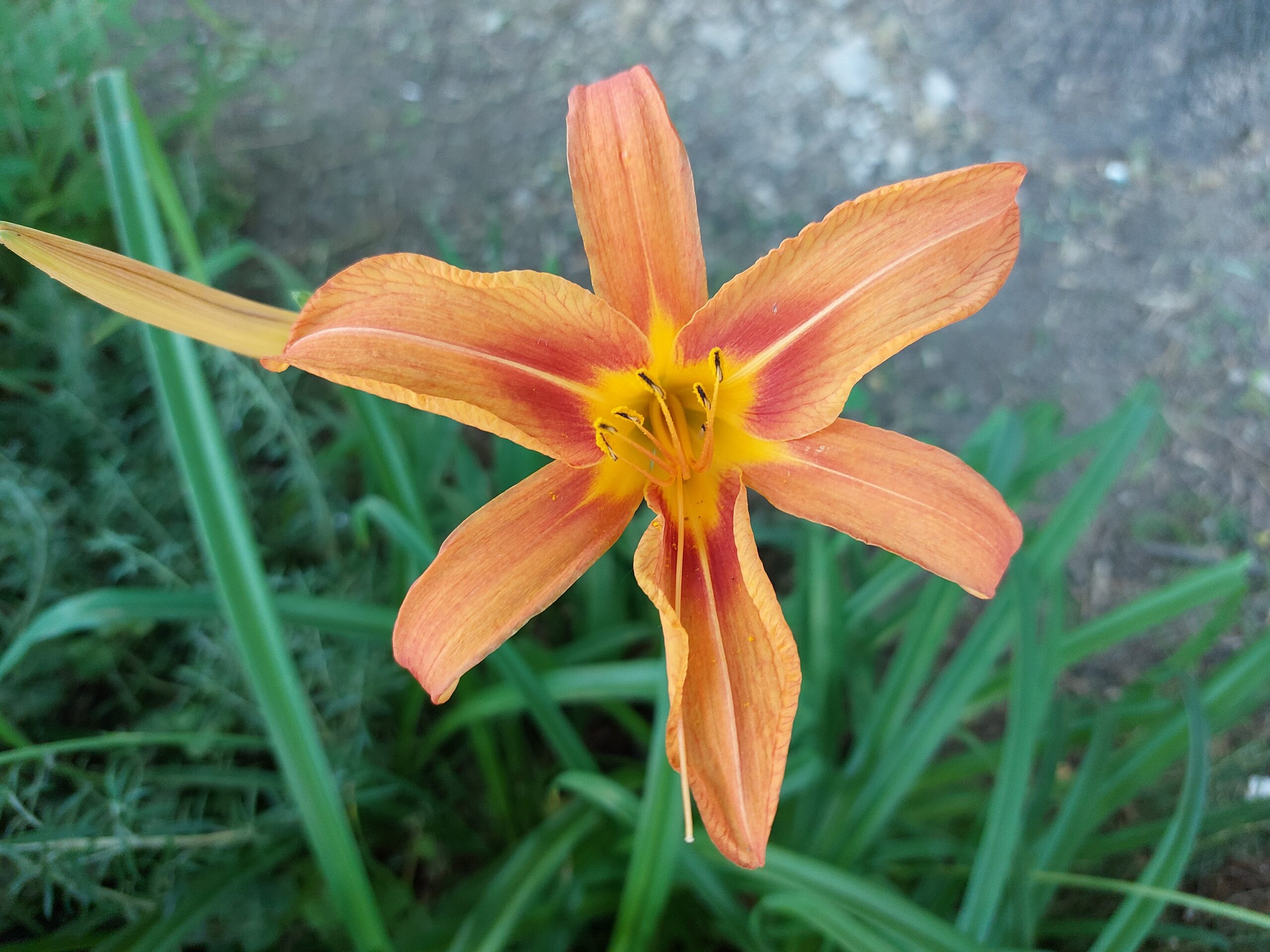
Daylilies are one of the easiest perennial plants to grow, making them a staple in low-maintenance gardens. These plants aren’t true Lilies but a highly hybridized group of plants with approximately fifteen common species and an astonishing 80,000 different cultivars! You can buy flowers from white to deep reddish-purple, but orange and yellow are the two most common colors.
Unlike true Lilies that grow from bulbs, Daylilies grow from fleshy roots known as tubers. The tubers store nutrients and moisture so plants can survive across a wide range of climates.
Sunlight Requirements
Daylilies also love full sun and need a minimum of six hours of sunlight daily. If you live in a scorching climate, they will appreciate some afternoon shade to give them a break from the sun’s intensity. Darker varieties also prefer afternoon shade to help them retain their deep color.
Watering Frequency
The first year you plant new Daylily tubers, it’s critical to water them regularly to help the roots establish and grow deep into the soil. After the first season, only give them water if the weather is sweltering or there’s a significant lack of rainfall. Too much soil moisture may cause the tubers to rot.
Fertilizing
Instead of regular fertilization, it’s better to add compost each season to the topsoil around the plants to provide added organic material, nutrients, and beneficial soil microbes.
Dividing Daylilies
Daylily plants should be divided every few years in late summer to keep them from getting too crowded. Dig the plants out of the ground, brush as much soil off as possible, and then rinse them so you can see where to divide the tubers. Use a sharp, disinfected knife to separate the plants, cut back the tops of the foliage, and replant the smaller clumps.
Purple Coneflower (Echinacea purpurea)
USDA Zones: 3 to 9
Sun Requirement: Full sun
Mature Height: 2′ to 5’ (60 to 150 cm)
Mature Width: 1′ to 2’ (30 to 60 cm)
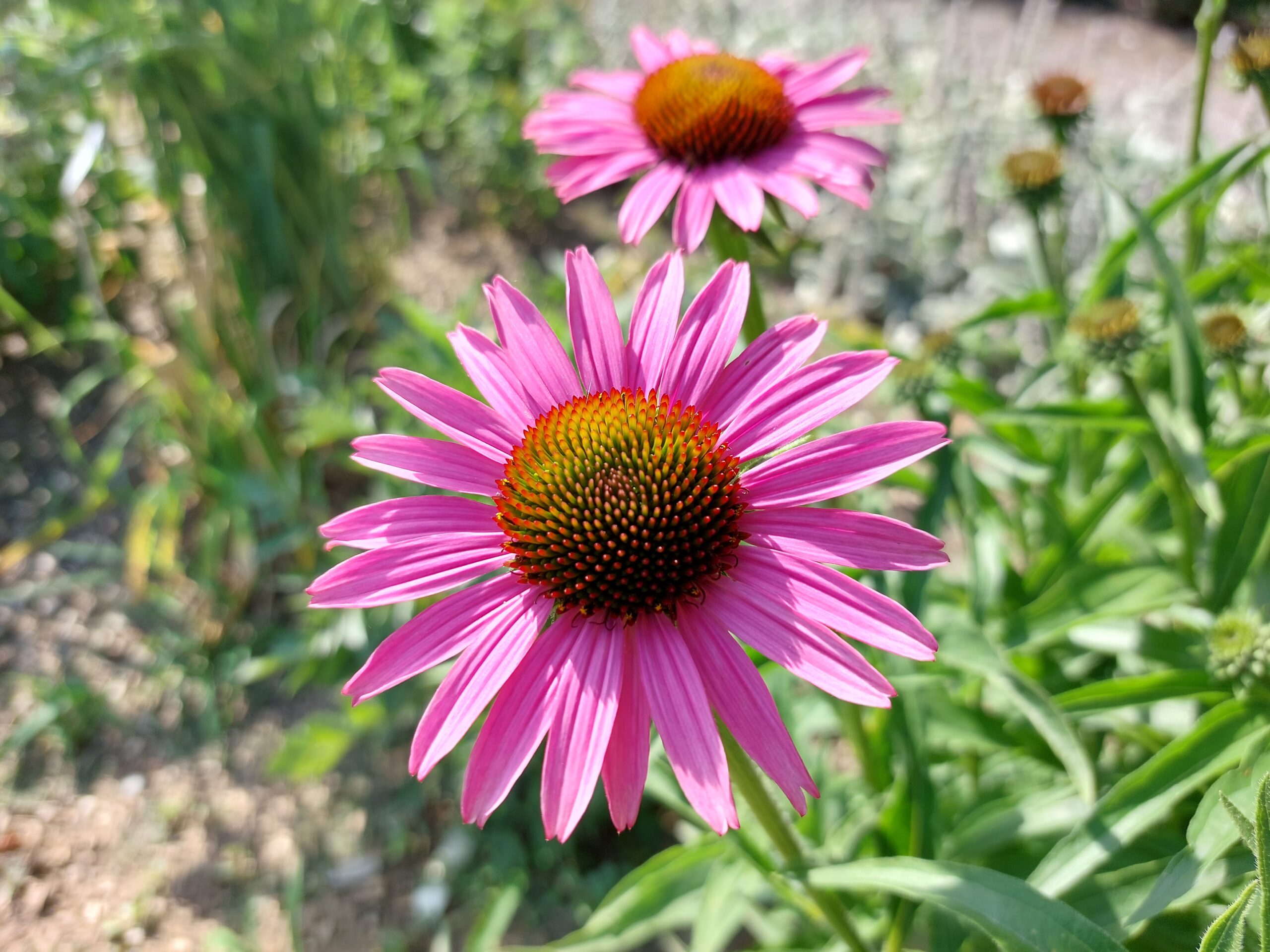
Purple Coneflower, or Echinacea purpurea, is undoubtedly the most popular type of Coneflower grown. The flowers look similar to Daisies, but the petals feel “papery” or dry instead of soft and supple. This variety is available in different shades, but the classic one has the iconic light purple petals surrounding the reddish-orange center. Not only is Purple Coneflower a beautiful plant, but it also has many medicinal uses too!
Sunlight Requirements
To get the most significant number of blooms, you want to plant it in a full sun location that basks in sunshine for at least six to eight hours a day. Plants will tolerate some shade, but you’ll see a reduction in blooms, and the stems may weaken, eventually flopping over under the weight of the blossoms.
Watering Frequency
Purple Coneflowers are often thought of as drought-tolerant plants and will handle periods of dryness, but they prefer regular watering. After planting, water them daily for the first few weeks and then scale back to giving them an inch of water weekly. Older plants might only need watering during periods of drought.
Fertilizing
Purple Coneflowers are another flowering perennial that doesn’t require a lot of fertilizer. Too much can encourage rapid foliage growth, causing the plants to grow tall and leggy instead of bushy and full. Like Daylilies, they are content if you add compost to the soil each spring to give them a boost of nutrients.
Hostas (Hosta spp.)
USDA Zones: 3 to 10
Sun Requirement: Partial shade to shade
Mature Height: 8” to 4’ (20 to 120 cm)
Mature Width: 2′ to 6’ (60 to 180 cm)
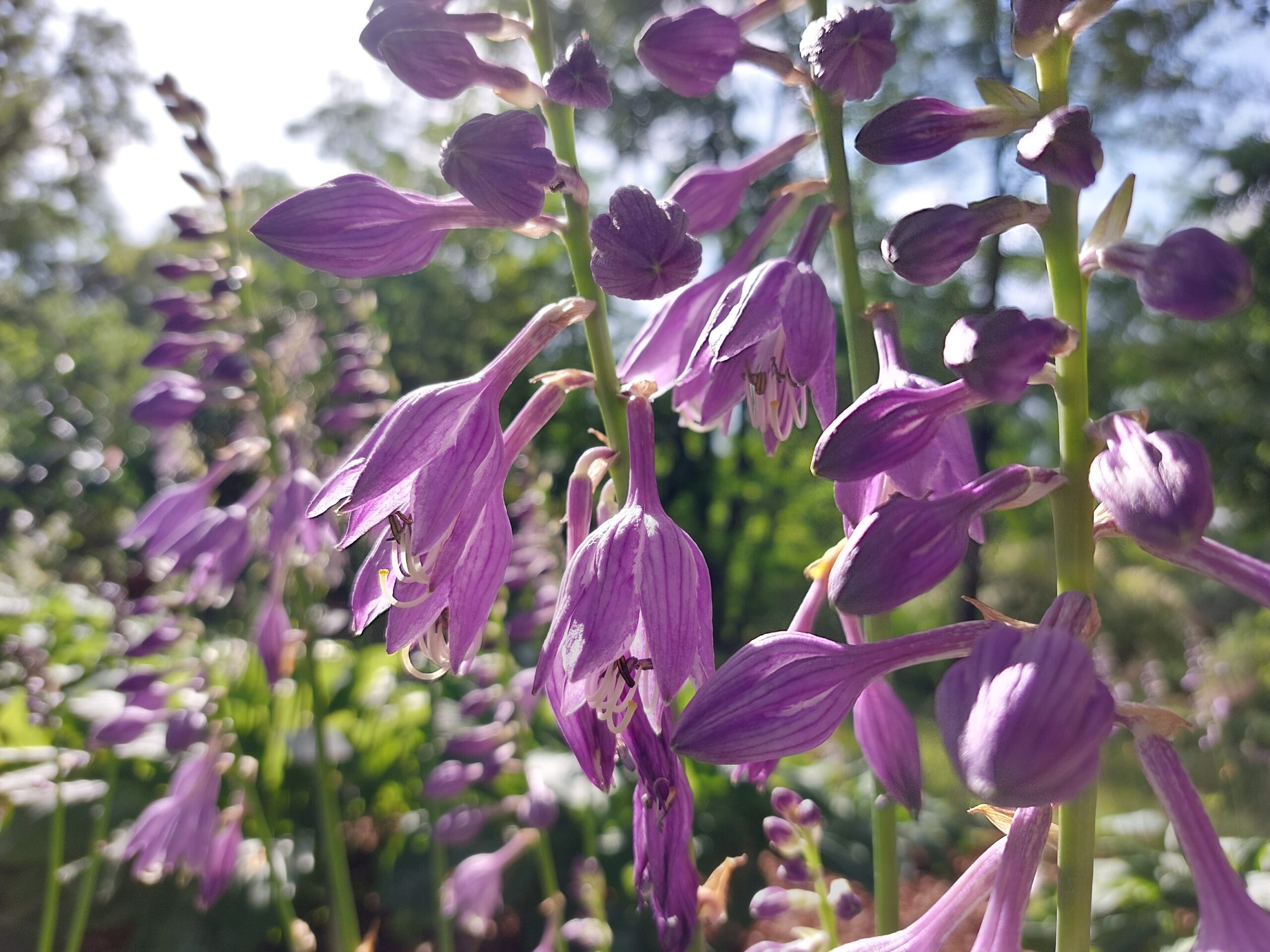
After reading the first four, you’re thinking you need a bright, sunny backyard to have beautiful perennial plants. That isn’t the case at all! Hostas are great plants for shady spots in your yard and garden. They thrive against foundations and under trees, constantly living in the shadows.
There are many different varieties available so that you can choose from plants with foliage in hues of green, grayish-green, and greenish-blue adorned with accents in cream or yellows. During the summer, they’ll send up flower spikes with small purple or white blossoms.
Sunlight Requirements
Different varieties have slightly varied sun requirements. While known for their shade-loving tendencies, highly variegated varieties like a bit of morning sun to keep their colors bright. Dark green types are the best for the deeply shaded areas of your yard.
If your plants get too much light, you’ll notice the leaves turning brown along the edges.
Watering Frequency
Since most Hostas grow in shade spots, they don’t need regular watering because the soil tends to stay moister. Check the soil around plants periodically and give them a drink when the top inch or so is dry. If possible, avoid watering from overhead to minimize fungal diseases. Plants grown in sunnier spots will need water more often.
Fertilizing
Hostas will thrive without fertilizer if you plant them in rich, fertile soil. To encourage foliage growth, you can apply a balanced formula fertilizer—preferably slow-release in spring when the leaves start emerging from the ground.
How to Divide Hostas
Like daylilies, your Hostas benefit from being divided every couple of years. The roots only grow from their tips, so you must take care not to slice off the ends of the roots or cause them damage.
- The day before dividing, water the soil well to make it easier to dig.
- Begin by inserting a clean digging fork or shovel about a foot away from the outer edge of the Hosta clump.
- Continue around the perimeter of the plan using your fork or shovel to pry the plant up out of the ground.
- After removing the Hosta, lay it on its side on a tarp or other work surface.
- Use your finger to untangle the roots and dislodge as much soil as possible from the root ball.
- Inspect the clump and divide it along natural breaks using your hands or a spade.
- Remove any dead or damaged leaves and foliage that isn’t connected to roots.
- Immediately replant the divisions.

